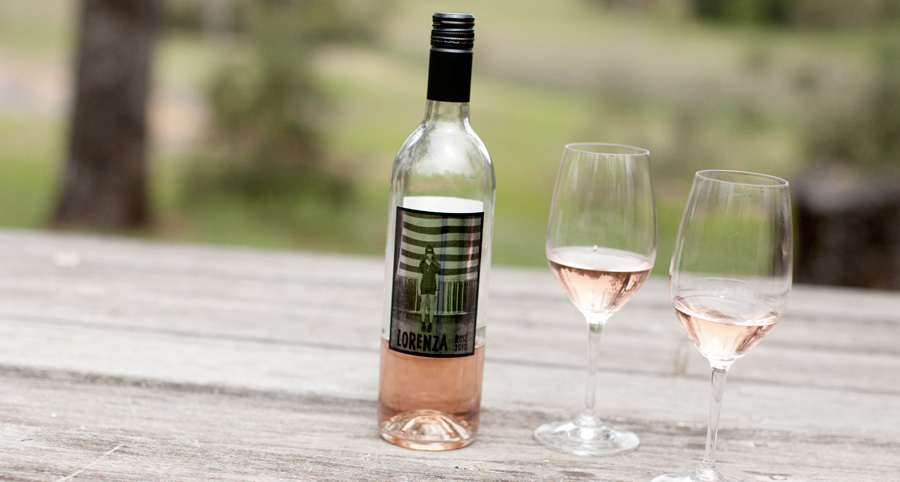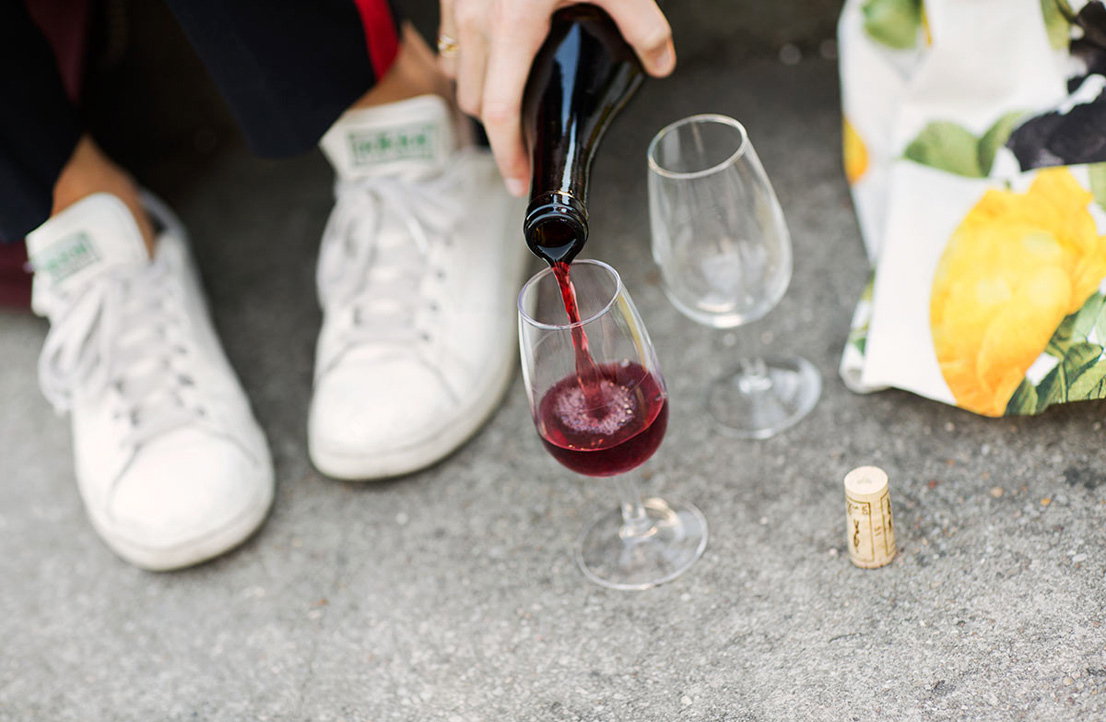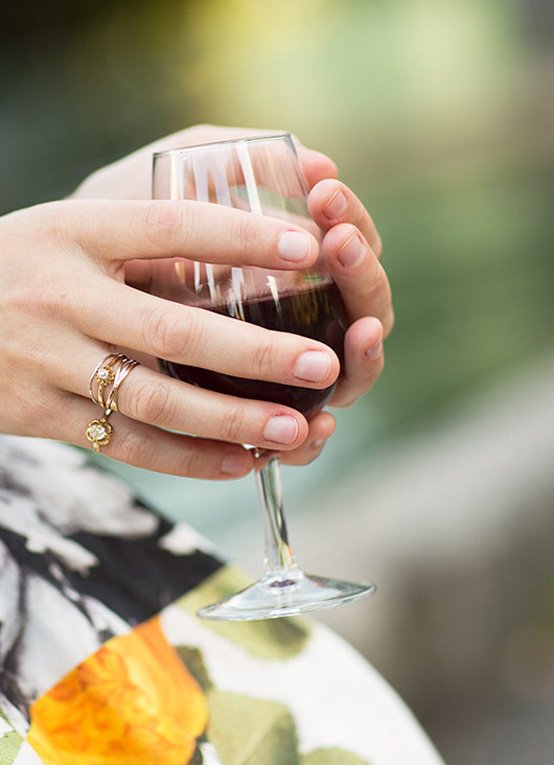You know the feeling. You’ve sat down to dinner, scanned the foodie-centric menu and know confidently what you want, no qualms about it – then the wine list arrives. Heavy, serious, and laced with intimidation. So, what do you do?
Until very recently, my answer would simply have been to ignore it. Wait for your other half/parent/more mature friend to take the lead. Failing the presence of any of these, simply spend time pretending to ponder the list, before opting for the second cheapest – a tactic that promises to deal with awkward run-ins with the aforementioned list, but frankly offers little appreciation for the drink beyond surprise when it actually tastes good. You can do better.
If you hadn’t already guessed, wine appreciation is new territory for me – although, its not due to lack of exposure. On weekends home from university, my father attempted to educate me beyond the realms of Blossom Hill, and successfully got me onto dusty pink Pinot Blush. Then it was the turn of my boyfriend, a huge fan of New World wines, who wanted to shake my love of the, ‘Princess Petrol’, in favour of a bold Pinot Noir. I discovered whites for myself – Riesling, as you asked – on a wine tasting outing six months ago. So, over the four years I’ve been legal to drink, I have amassed knowledge of a mighty three grapes of wine. Three.
When I think about the time and research I have put into this – and I can count many hours, I assure you – this appals me. But just what is it about wine that has us at a halt? We all love it, and yet so many of us still stutter over our Sauvignon Blanc.
“Wine is quite a threatening hobby”, offers Melanie Brown, founder of the New Zealand Wine Cellar. “There are so many factors, rules and regulations to dissect.”
Quite right – but that stops here. From the different grapes, variation based on region and flavours to look out for, to what to consider in choosing a bottle and how to taste it, let this guide cover you on all the essentials. You may well already have a favourite wine, but it is well worth being aware of what else is out there – plus, you can add it into your dinner party conversation topics portfolio. We’ll make it brief.
The Basics
White
“The first step is to figure out whether you want something light or rich. Keep in mind that dry white wines can still have sweetness/fruitiness on the palate,” says Natalia C. Jiménez, sommelier at Peruvian restaurant Coya. “While not very popular, these wines go well with dishes high in acidity or spiciness. Body white wines generally tend to be rounder and creamier and we normally reserve them for elaborate fish dishes or even white meat.”
The Ones to Know
Riesling: A delightful grape that originates from Germany, but is also found in Australia, the US, France, Austria and New Zealand. Light in alcohol, it has a refreshing, fruity acidity, with a sweet taste – although you can find dryer versions, too.
Pinot Grigiot: Characterised by it’s dry, light style and refreshing acidity, this is a super popular grape, grown in the Alto-Adige region of North East Italy.
Sauvignon Blanc: Dry and light-bodied, this wild-grown grape offers a zesty taste and green fruit flavours. Found in Italy, Spain, Austria and the Southern France.
Chenin Blanc: This grape is similar to the Riesling, but with less sweetness. Still, it offers versatility and a zesty flavour and though it has roots in France, it is now mostly grown in South Africa.
Chardonnay: Dry and full-bodied, Chardonnay is the white offering of much applauded wine region, Burgundy. It is low on sweetness but big on fruit flavours, with relatively high acidity.
RED
“Reds can be more difficult to identify so it’s important to decide whether you want a light, medium or bodied wine, fruity or dry,” Galeni says. “Light red wines work perfectly with fish and white meat and in sauces with intense flavours while bodied wines are generally recommended for red meat or game.”
The Ones To Know
Pinot Noir: Originating in France, Pinor Noir is a dry and light-bodied grape. Look for a sharp fruit burst with a smooth finish.
Sangiovese: The spicier, slightly more herbal cousin on Cabernet Sauvignon, Sangiovese is Italy’s champion wine. It has high acidity, with smoky flavours.
Grenache: This is similar to a Grenache, but a touch lighter and with less spice.
Syrah: Perhaps more commonly known as a Shiraz, the Syrah grape originates in France and offers bold fruit flavours with a wonderfully smooth finish.
Merlot: Think a smoother Cabernet Sauvignon, with more cherry flavours. It’s grown over around 600,000 acres across France, Italy, the US, Australia and Chile and offers medium acidity.
Cabernet Sauvignon: This full-bodied grape is the most popular in the world. It has a bold taste and peppery finish.
So wait, what is rosé? I quizzed Melanie about this question too. It turns out that pretty much any grape can be a rosé, but the main grapes to produce it are Pinot Noir (the lightest shade), Merlot, Grenache and Malbec (the darkest). Essentially, if it’s not quite red, it’s rose.
 The Important Four
The Important Four
Having got the varieties down, it’s time to consider flavour vocab – acidity, sweetness, tennins and body.
“Every wine has acidity but it must be balanced with the fruitiness/ sweetness of the wine for it to be a good wine,” explains Georgia Frost, Food & Wine PR Manager at Selfridges. “You cannot smell acidity – you feel it at the side of your mouth. The higher it is, the more you will salivate. A Riesling, for example, may have high acidity, but you will not feel as if the fruit character and the sweetness is balanced. In a poorly balanced wine, the acidity will feel spiky on the palate. Taste a Viognier against a Dry Riesling to see the difference between high and low acid.”
“Sweetness can be judged in two ways. Firstly, by sight, in the tears/legs that run down the glass – the sweeter the wine, the more it clings to the glass.”
“The second way is on your palate, especially the tip of your tongue. Sometimes a wine can feel sweet, but it is more about how fruity it is than the actual sweetness. Look at the finish of the wine, and whether your palate is left dry afterwards. Try Chablis versus a dessert wine to best understand this.”
“Tannins are mainly present in red wines – this is the thing that can cause your palate to pucker. The best way to understand what tannins are is to chew on a grape skin or leave your tea to stew for a long time. That drying sensation is tannins. They can be smooth or rough and often soften with age. Again they must be balanced with fruit and acidity. Food often softens tannins as well. Taste a New World Pinot Noir versus a Bordeaux to look at a low and high tannin wine.”
“Finally, Body. This is how heavy or round the wine feels on your palate, and is often linked to alcohol. Some wines are light and delicate, others are really rich and heavy. Compare a big Aussie Shiraz with a Chablis to understand this.”
Region is well worth considering on flavour too, says Melanie. “New World wines (grown in New Zealand, Australia, Argentina, Chile, South Africa and the US) tend to be very fruity and pungent due to the climate they’re grown in. Old World wines (traditional growing regions of Europe and the Middle East) tend to be much older, complex and minerally driven.”
Taste and Quality
“When you taste wine make sure you have a good clean glass,” says Georgia. “First look at the colour – is it dark or light, clear or hazy? Colour can tell you age and grape and, to an extent, the wine making technique. Does the wine have legs/tears if so how prominent are they? The more the legs cling to the glass the higher the alcohol or the sugar levels in the wine. Also consider whether the wine has bubbles or any deposits.”
“Next, swirl the wine round the glass to get air into it to release all the flavours. Take a good sniff and make note of your first impressions. Is the wine clean or does it have a musty faulty aroma?”
“Once you have sniffed then taste, savour and swirl it round your mouth, drawing in air at the same time to again make sure the flavours are released. It’s then that you can consider acidity, sweetness, tannins and body, but also alcohol and quality. You feel alcohol on the back of the palate, and it can create a feeling of heat once you swallow. If a wine is in balance, you should not feel the alcohol too much even if it is high. If it is out of balance, you will feel more heat.”
“Quality is the combination of a lot of things, but can be judged in a few easy ways. Firstly, is the wine in balance – is the acidity, sweetness, flavour and alcohol all in harmony? Keep in mind that some wines take time to come into balance, so be careful.”
“Secondly, length: how long do the wine’s flavours and sensations stay with you once you have swallowed? The longer you can taste the wine after the higher the quality. If you just taste a wine and it gives you everything on the first sip, it is probably of lower quality. If you keep coming back to it and it opens up in the glass then it is probably higher quality.”
Having all this down, the next step is to test you knowledge – but don’t feel like you need rush into it. When you step into the wine cellar, don’t be afraid to ask for help – but arm yourself with these considerations from Melanie first.



